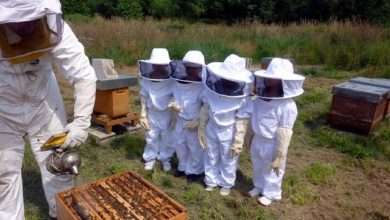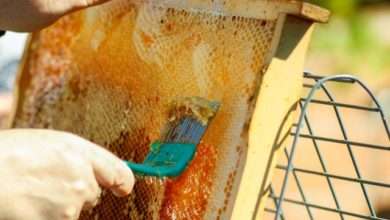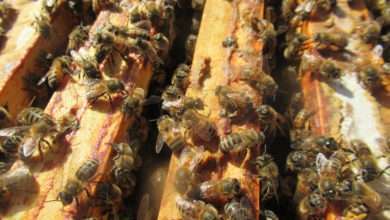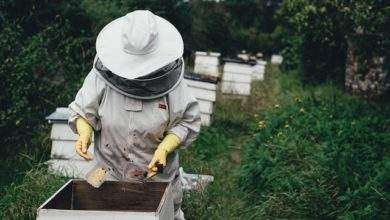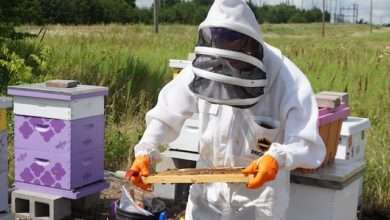Hive Configuration: 2 Deep vs 1 Deep 1 Medium – Pros and Cons

Beekeeping is a rewarding and fascinating hobby, but it’s essential to make the right choices when setting up your hives. One of the most critical decisions beekeepers face is whether to use 2 deep hive bodies or 1 deep and 1 medium. Both configurations have their benefits and drawbacks, so it’s crucial to weigh the pros and cons before making a decision.
Pros and Cons of 2 Deep Supers
Here, we will explore the pros and cons associated with using two deep supers in beekeeping. By understanding the advantages and disadvantages, beekeepers can make informed decisions when it comes to their hive management practices.
Pros:
- Greater Brood Volume: One of the significant advantages of using two deep supers is the availability of greater brood volume. This means that there is more space for the queen to lay eggs and for the brood to develop and grow. The larger brood area can result in stronger and more productive colonies, leading to increased honey production in the long run.
- Better Insulation in the Winter: Another benefit of using two deep supers is the improved insulation it provides during the winter months. The additional space between the supers allows bees to create a thicker layer of honey for insulation. This extra insulation helps the colony maintain a stable temperature, preventing excessive heat loss and reducing the risk of winter losses.
- More Storage Space for Honey: In beekeeping, honey production is a primary goal for many beekeepers. Using two deep supers provides ample storage space for honey, allowing the bees to store larger amounts of surplus nectar. This surplus can then be collected and harvested by beekeepers, resulting in increased honey yields.
Cons:
- Increased Weight of Hive: While the benefits of using two deep supers are quite compelling, it is important to consider the potential drawbacks as well. One such disadvantage is the increased weight of the hive. Two deep supers filled with bees, brood, honey, and other resources can become quite heavy. This can pose challenges during hive inspections and hive manipulations, requiring additional physical effort from the beekeeper.
- Higher Risk of Brood Diseases: The use of two deep supers can lead to a higher risk of brood diseases. With a larger brood area, the spread of diseases such as American foulbrood and European foulbrood can be more challenging to control. Beekeepers must closely monitor their colonies for signs of disease, implement appropriate hygiene measures, and be proactive in managing potential outbreaks.
While using two deep supers can offer advantages such as increased brood volume, better insulation, and more storage space for honey, it also has its downsides, including the heavier weight of the hive and a higher risk of brood diseases.
Pros and Cons of 1 Deep 1 Medium Supers
Now, we will explore the pros and cons of utilizing this setup in your beekeeping operation.
Pros:
- Easier to Manage: One of the primary advantages of the 1 Deep 1 Medium Supers is the ease of management they offer. With only two supers to handle, beekeepers find it more convenient and less time-consuming to inspect and manipulate their colonies. This configuration simplifies hive inspections, making it ideal for beginners or beekeepers who prefer a more streamlined approach. Additionally, managing two supers reduces the risk of confusion and potential mistakes that can occur with larger setups.
- Lighter Weight: The 1 Deep 1 Medium Supers configuration is significantly lighter compared to other hive configurations such as the traditional Langstroth with multiple deep supers. This weight reduction makes it easier to move and transport hives, especially during seasonal migrations or relocation. Beekeepers who are concerned about their physical capabilities or have limited strength will find this setup more manageable and less physically demanding.
- Reduced Risk of Diseases: On a positive note, utilizing the 1 Deep 1 Medium Supers configuration can potentially reduce the risk of diseases within the colony. Smaller hive setups generally make it easier to spot signs of diseases or pests. With a smaller number of frames to inspect, beekeepers can more effectively assess the overall health of their bees, identify potential issues early on, and take necessary preventative measures. This proactive approach can significantly contribute to maintaining colony health and reducing the spread of diseases.
Cons:
- Potentially Lower Honey Production: While the 1 Deep 1 Medium Supers offer convenience and ease of management, one drawback is the potential for lower honey production. The size of the supers plays a role in determining the honey yield. With fewer supers available for honey storage, there is less space for bees to store nectar, resulting in potentially lower overall honey production. Beekeepers with a primary focus on maximizing honey yield may consider alternative configurations that allow for more honey storage capacity.
- Less Space for Brood: Another aspect to consider when opting for the 1 Deep 1 Medium Supers is the reduced space for brood rearing. The brood chamber, consisting of the deep super, is crucial for the healthy development of the colony. However, with only one deep super, the available space for the queen to lay eggs and for brood expansion is limited. Beekeepers who prioritize colony growth and strength may need to monitor the brood chamber closely and consider providing additional space if necessary.
The choice of hive configuration is an important decision for beekeepers. The 1 Deep 1 Medium Supers offer several advantages, including easier management and lighter weight, making it an attractive option for many. However, it is essential to consider potential drawbacks, such as potentially lower honey production and reduced space for brood.

Conclusion
Beekeepers must carefully consider the pros and cons of 2 deep versus 1 deep 1 medium hive configurations. Each option comes with its own set of advantages and disadvantages, and the right choice will depend on the individual beekeeper’s priorities and circumstances. Whether prioritizing maximum honey production or ease of management, beekeepers must weigh these factors carefully before making a decision.
FAQ
How do I determine which hive configuration is best for my needs?
- Choosing the ideal hive configuration depends on various factors, including your beekeeping goals and resources. If you have a large colony and aim for maximum honey production, the 2 deep box configuration can be more suitable. However, if you prefer a more balanced approach with manageable weight and flexibility in honey extraction, the 1 deep box and 1 medium box configuration might be preferable. Assess factors such as colony size, local climate, physical capabilities, and honey production objectives to make an informed decision for your specific needs.
What are the benefits of using a 2 deep hive configuration?
- Using 2 deep hive bodies provides a greater brood volume, better insulation in the winter, and more storage space for honey. However, it’s essential to consider the increased weight of the hive and the higher risk of brood diseases.
Can I switch between hive configurations?
- Beekeepers can switch between hive configurations as needed. However, it is recommended to transition during periods of low colony activity, such as during winter or early spring. This minimizes disruption and stress to the bees. Additionally, ensure you have the necessary equipment, such as additional boxes and frames, to make a smooth transition.
What are the advantages of a 1 deep 1 medium hive configuration?
- A 1 deep 1 medium hive configuration offers easier manageability due to its lighter weight and reduced risk of brood diseases. However, it may result in lower honey production and limited space for brood, impacting overall colony productivity
Are there any challenges in transitioning between hive configurations?
- Transitioning between hive configurations can present a few challenges. One challenge is the need for additional equipment if switching to a different configuration that requires extra boxes or frames. This may entail an investment in hive components. Additionally, the bees may take some time to adapt to the new spacing and box arrangement, so closely monitoring their behavior and ensuring they have sufficient stores during the transition is crucial.
Should I consult with experienced beekeepers before deciding on a hive configuration?
- Consultation with experienced beekeepers is always a good idea before making significant changes to your hive configuration. Their experience and insights can provide valuable guidance, considering various factors such as your specific beekeeping goals, local conditions, and the overall health and behavior of your colony.
Please Note: If you ask the opinion of 3 beekeepers, you will likely receive 5 different answers!
